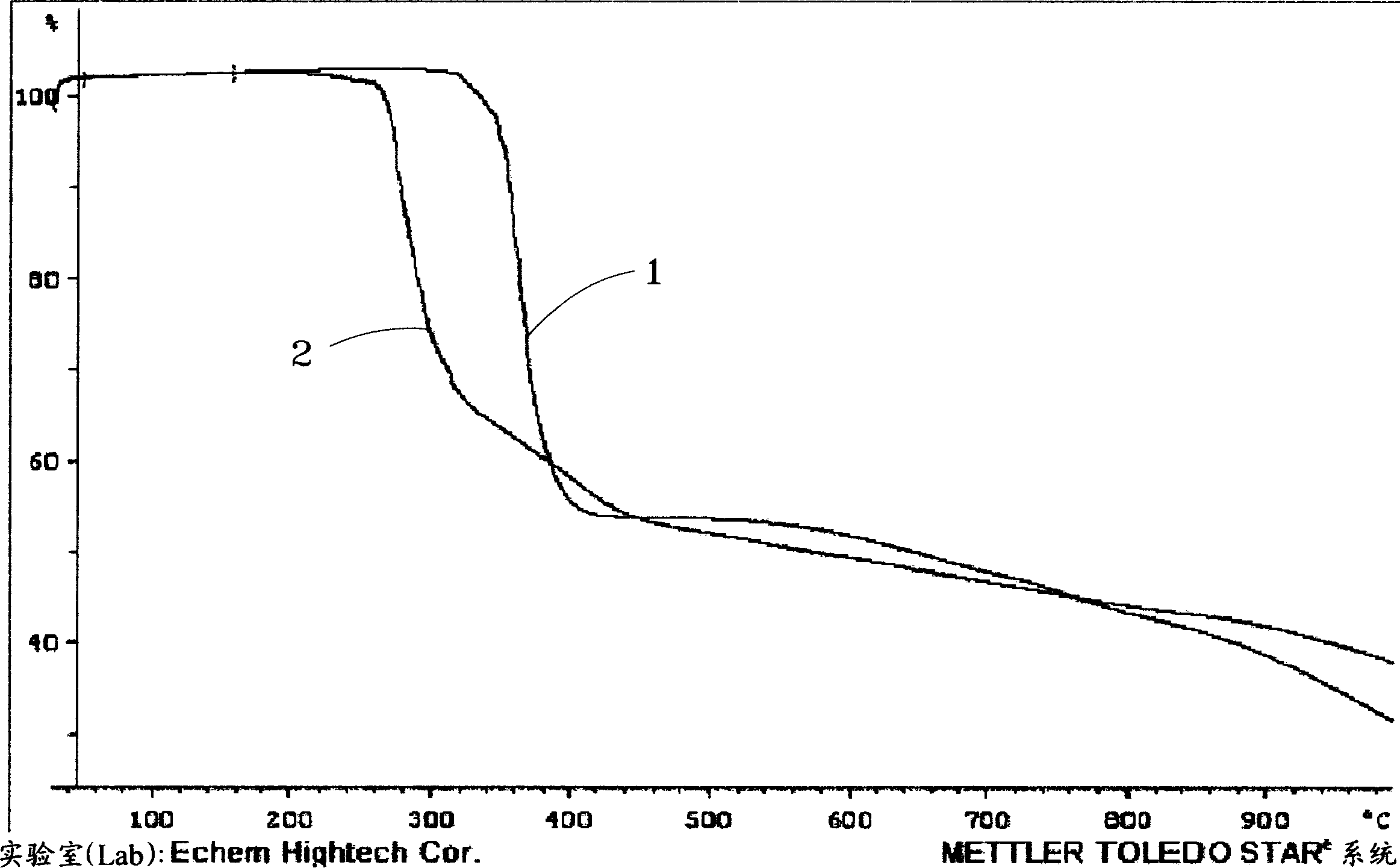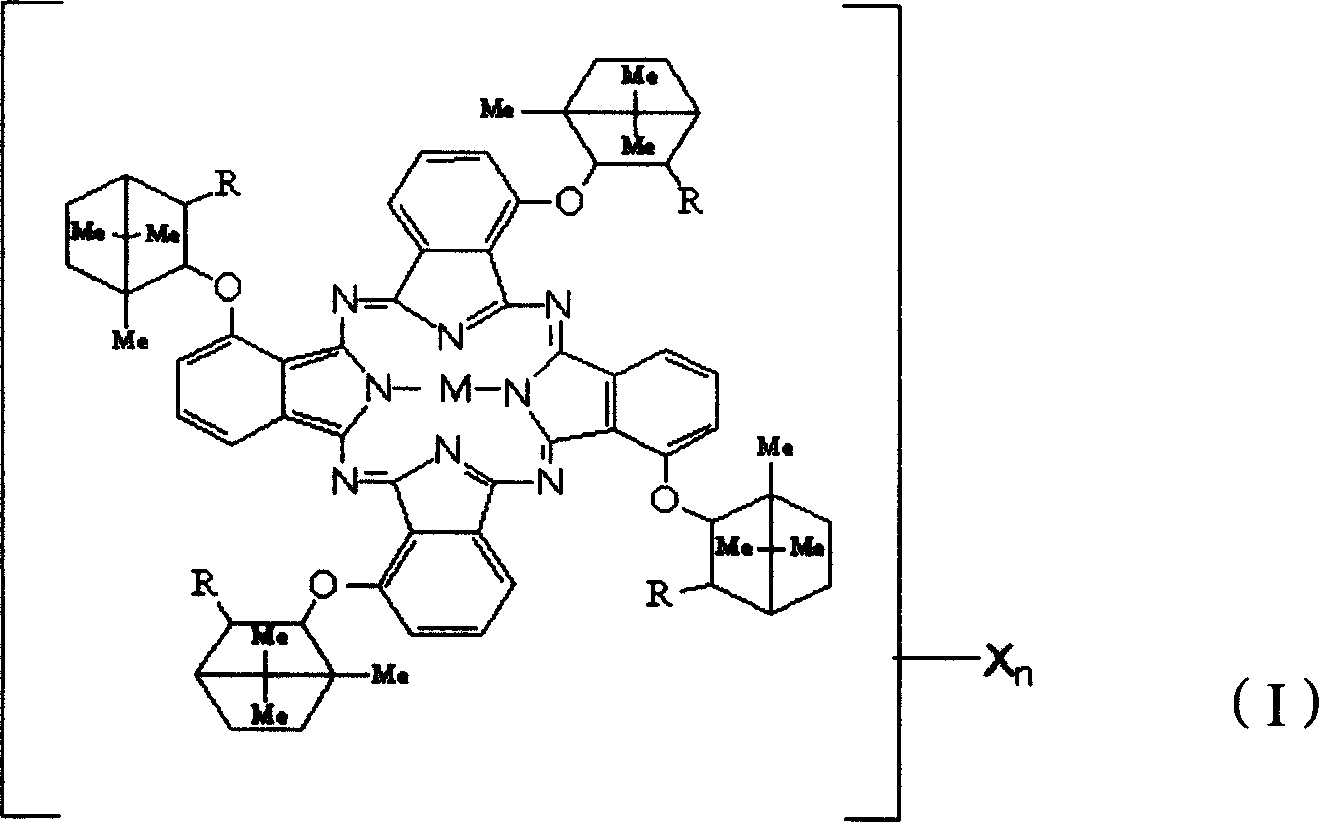Recording layer dye of recordable disk with high speed
A technology for optical discs and recording layers, applied in the field of phthalocyanine dyes, which can solve the problems of solubility sensitivity, low reflectivity, high jitter rate, and affecting quality
- Summary
- Abstract
- Description
- Claims
- Application Information
AI Technical Summary
Problems solved by technology
Method used
Image
Examples
Embodiment
[0021] Embodiment: the synthesis of phthalocyanine dye
[0022] The present invention is that 10g (7.4mmol) of four-alpha-(alpha-allylborneoxy) copper phthalocyanine (copper tetra-alpha-(alpha-allylborneoxy)phthalocyanine) and 150ml of dichloromethane are placed In a 250ml three-neck round bottom flask, add 0.56g (3.5mmol) of bromine water and stir at room temperature for 1 hour. After the reaction is completed, pour into 10% aqueous sodium bicarbonate solution, add 100ml of dichloromethane for extraction, wash with water, salt out, dry over magnesium sulfate, filter, concentrate under reduced pressure, and use silica gel as a filler for column chromatography to purify. Toluene was used as the eluent; the solid obtained after concentration under reduced pressure was vacuum-dried at 130° C. for 16 hours to obtain 10.5 g of a dark green compound, which was the phthalocyanine dye of the present invention.
[0023] The known structures of phthalocyanine dyes are as follows:
[0...
PUM
| Property | Measurement | Unit |
|---|---|---|
| glass transition temperature | aaaaa | aaaaa |
| glass transition temperature | aaaaa | aaaaa |
Abstract
Description
Claims
Application Information
 Login to View More
Login to View More - R&D
- Intellectual Property
- Life Sciences
- Materials
- Tech Scout
- Unparalleled Data Quality
- Higher Quality Content
- 60% Fewer Hallucinations
Browse by: Latest US Patents, China's latest patents, Technical Efficacy Thesaurus, Application Domain, Technology Topic, Popular Technical Reports.
© 2025 PatSnap. All rights reserved.Legal|Privacy policy|Modern Slavery Act Transparency Statement|Sitemap|About US| Contact US: help@patsnap.com



